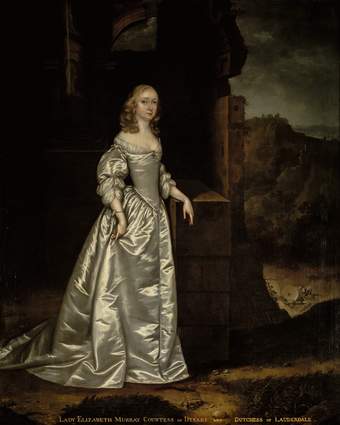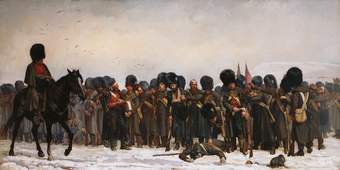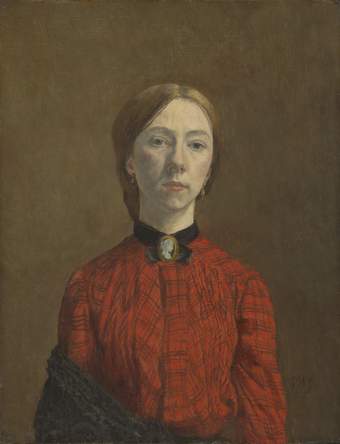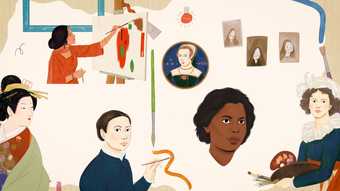From Tudor times to the First World War, women artists paved a new path for generations to come forging successful careers as professional artists. Despite their achievements, many of their works have been lost and their legacies forgotten. Below we celebrate four determined creatives you may not know - but should.
1600s:
Joan Carlile

Portrait of an Unknown Lady 1650s Courtesy of the Bute Collection at Mount Stuart
Joan Carlile challenged societal expectations by becoming one of Britain’s first professional women artists in the 1600s, earning her living as an oil painter. Initially employed in King Charles I's household, Carlile liked to paint in her spare time. With the outbreak of the Civil War, she began painting to support herself.
Carlile moved to Covent Garden in the 1650s – then the centre of the art world – and set up a successful commercial portrait business. Her template of carefully posed figures in silk gowns against landscape backgrounds, seen here in Portrait of an Unknown Lady (1650–5), proved extremely popular. Admired as a professional artist in her lifetime, only a small number of her portraits still exist, some which have never been seen in public. Now You See Us is a rare opportunity to come face-to-face with these works.
1700s:
Mary Moser

Mary Moser Flowers in a vase, which stands on a ledge 1765 The Syndics of the Fitzwilliam Museum, University of Cambridge
Admired for her striking paintings of flowers, Mary Moser was recognised for her talent from a very young age. She trained with her father, an acclaimed artist and goldsmith, winning her first medal for flower drawing at 14. At just 24, she became one of only two female founders of the Royal Academy, alongside Angelica Kauffman.
Moser painted portraits and historical scenes, but her skilled floral still life works, like Flowers in a vase, which stands on a ledge (1765), were praised by critics. Though still life was traditionally seen as a ‘lesser subject’, her floral works were so widely appreciated she received royal commissions, including one from Queen Charlotte. Despite recognition and the exhibition of many paintings, few of Moser's works survive today.
1800s:
Lady Butler

Elizabeth Butler The Roll Call 1874 Royal Collection Trust / © His Majesty King Charles III 2024
Elizabeth Thompson (later Lady Butler) defied convention by pursuing epic history painting, the highest form of art at the time. While male artists typically depicted heroism and battle scenes, women were expected to focus on smaller, sentimental narratives. Butler broke the mold with The Roll Call (1874). Its realistic portrayal of exhausted, wounded Grenadier Guards after battle unusually depicted the harsh realities of war – and the painting caused her professional career to explode overnight.
Displayed at the Royal Academy (RA), it was so popular an officer was stationed by the painting to manage the crowds. Queen Victoria eventually bought it for a hefty sum, and it toured Britain to widespread acclaim. Despite being regarded as the leading woman artist of the period, Butler and other women artists were consistently denied membership at the RA. In 1879, she came within two votes of being accepted as an Associate Member, the closest any woman had come in over 100 years.
1900s:
Ethel Walker

Dame Ethel Walker
Decoration: The Excursion of Nausicaa
(1920)
Tate
In her lifetime Scottish artist Ethel Walker was celebrated for her trailblazing paintings of the female form. A teacher before she painted fulltime, she developed her own unique style – large, mural-like paintings, which she called her ‘decorations.’ Walker often painted male and female nudes confidently placing female sensuality at the centre of her work, as seen in Decoration: The Excursion of Nausicaa (1920). Its dream-like vision of a feminist utopia was ahead of its time.
Working steadily for decades, she achieved many professional milestones, exhibiting around the world and representing Britain at the Venice Biennale four times. In 1943, Walker was made a Dame of the British Empire, and after her death The Times called her ‘the most important woman artist of her time.’ Despite this, it is only now that her artistic legacy is finally being recognised.
'There is no such thing as a woman artist. There are only two kinds of artist — bad and good.’
– Ethel Walker
Now You See Us: Women Artists in Britain 1520–1920 is on at Tate Britain from 16 May – 13 October 2024



